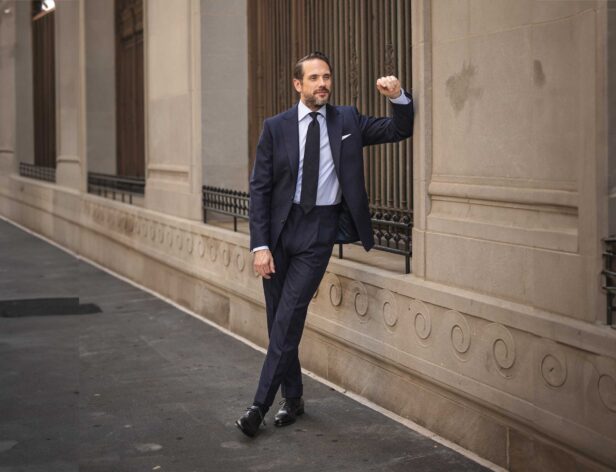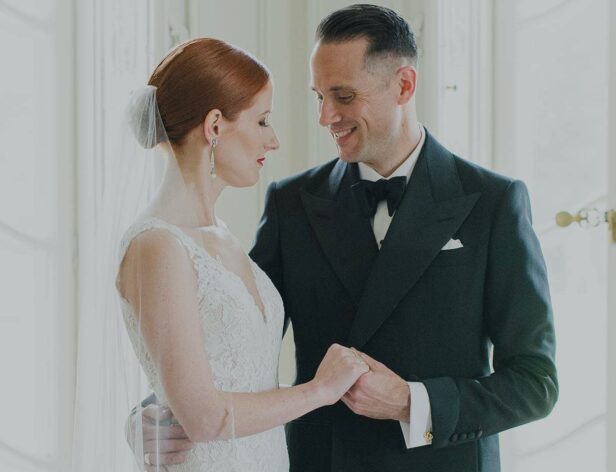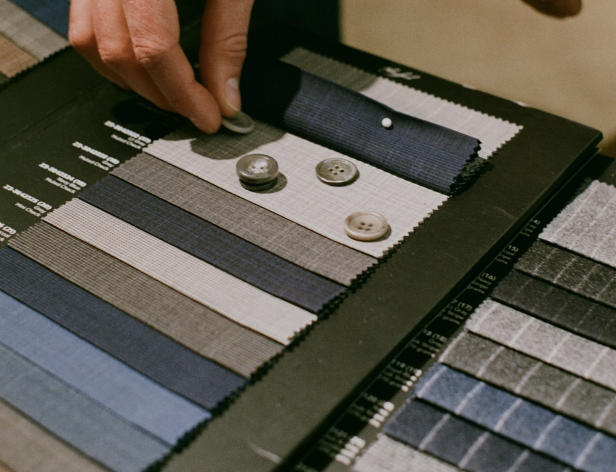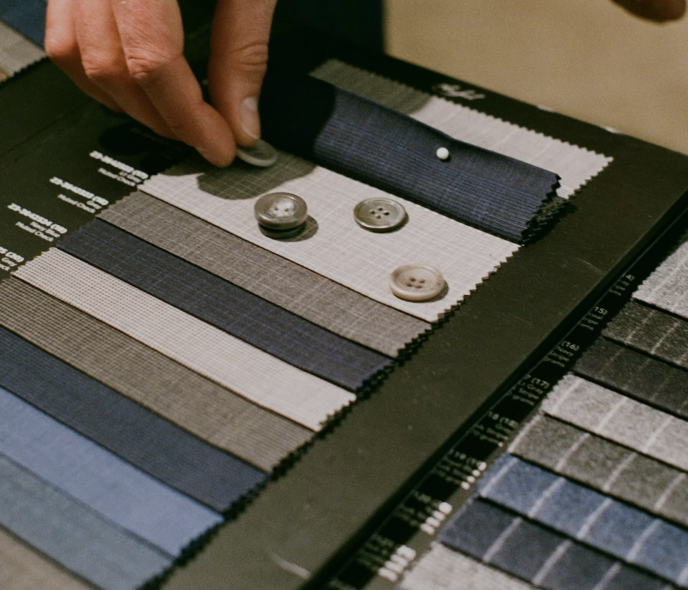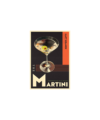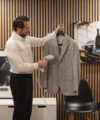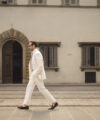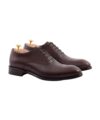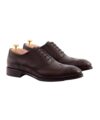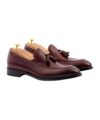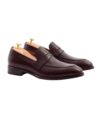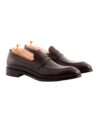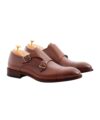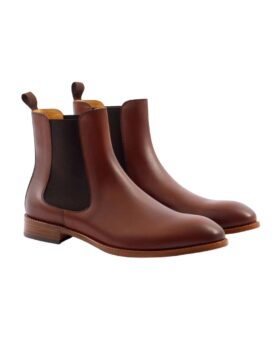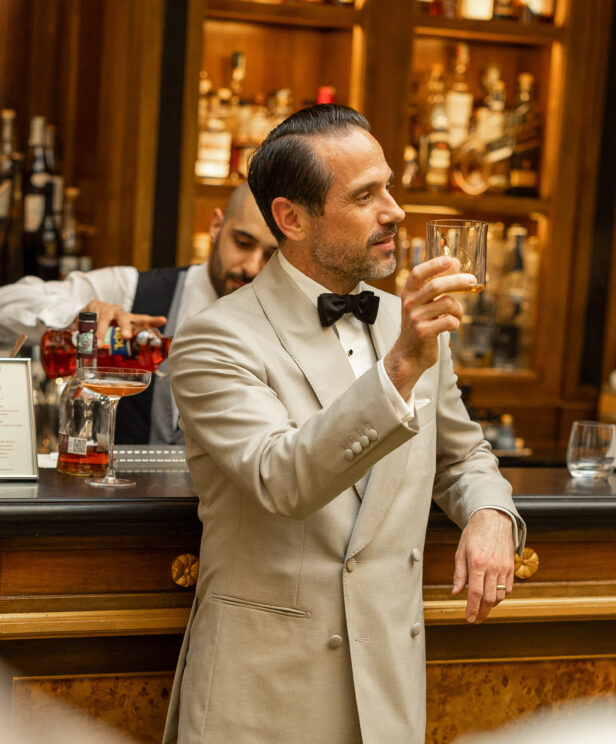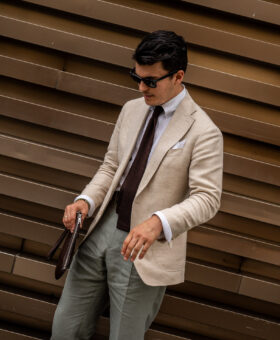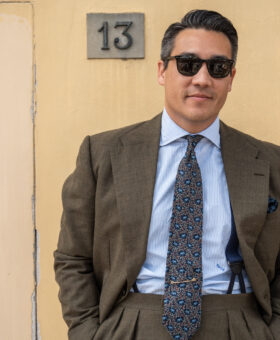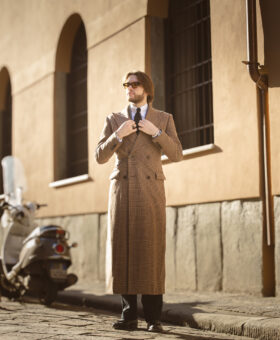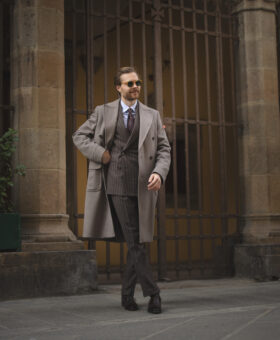Choosing The Right Shoes For Your Wedding Suit
Share
How to Choose and Match Your Shoes with Your Suit
Once you’ve decided on your wedding suit, the next thing you need to figure out is which dress shoes to wear. Now, several factors go into this – the formality of the event, the color of the suit, and your own style preferences. With that in mind, here’s a brief guide to choosing the best shoes for your suit.
Styles of Shoes
When it comes to dressing for a wedding, there are six key styles of footwear out there. Each type works best with specific suit colors, styles, and wedding dress codes.
Shoe Style #1: The Oxford
An Oxford is a specific type of shoe that’s created with closed lacing. What this essentially means is that the flaps of the leather that contain the lacing eyelets are sewn under the vamp as opposed to on top of it.
The result is a shoe that almost looks like a single piece of leather. Due to their construction, the Oxford is generally viewed as being one of the most elegant dress shoes out there. It’s simple, sleek, and perfect for formal events.
For an even more refined look, you can instead opt for a wholecut shoe. While the Oxford has the general appearance of being cut from a single piece of leather, the wholecut actually is. This makes these shoes even more elegant and sophisticated, not to mention stylish.
Shoe Style #2: The Derby
A derby shoe is much more casual than the Oxford because of the open lacing. Unlike the Oxford, this style has leather flaps with lacing eyelets sewn on top of the vamp. This results in a somewhat less elegant and more casual overall look. Because of this, a derby shoe is a great option for dressy casual or casual weddings.
Shoe Style #3: The Loafer
There are so many different styles of loafers, but the most common ones are the penny loafer and the tassel loafer. In terms of dressing up, there’s not much of a difference between these two options. So, you can choose whichever loafer style you prefer.
As a whole, loafers are considered smart casual. This makes them ideal for more casual events such as weddings with a cocktail attire, dressy casual, casual, or tropical/beach dress code.
Shoe Style #4: The Monk Strap
The monk strap shoe falls somewhere between the Oxford and the derby when it comes to how formal it looks. It’s a little dressier than the derby, but it’s also a bit too casual for the most formal occasions.
Perhaps the most popular style of monk strap dress shoe is the double monk strap. It has a bit of a stylish European flair to it – and it has a lot more personality than traditional lace-up shoes. However, it’s versatile enough for anything but the most formal events, especially if you want to add a little panache to your outfit.
There are also single monk strap shoes. Unlike the double strap, these low-fitted shoes have a single, wide strap to secure them in place. This gives them a more minimalistic design. Just like with the double monk strap, though, these shoes are appropriate for different social functions and semi-formal events.
Shoe Style #5: Dress Boot
The dress boot somewhat resembles an Oxford, but it has a longer shaft. In the right situation, it can be used as an alternative to an Oxford, but it’s not suitable for highly formal events.
This type of footwear often boasts wingtip broguing (perforations in the leather) along the seams and on the toe. As long as they consist of fine leather, they can complement most suits. Because of their appearance, these shoes are great for rustic weddings.
Shoe Style #6: The Chelsea Boot
The Chelsea boot is a slip-on style of dress boost that’s both sleek and minimalistic in design. They’re lace-free and feature a low heel and plain toe that gives them an elegant silhouette. These boots are also quite comfortable for longer events. In terms of formality, this option is best worn at weddings with a cocktail attire dress code.
Dress Shoe Colors: Matching Your Suit
Now that you have an overview of the different styles of dress shoes for a wedding, it’s time to consider your color options. After all, even the best shoes won’t look as great as they should if they don’t match the rest of your outfit.
Black Shoes
Black dress shoes are the most formal color option out there. And, unlike a black suit, these shoes are very versatile and can be paired with several different suit colors.
In particular, black shoes look great with a suit that’s navy blue, royal blue, charcoal gray, medium gray, light gray, or burgundy. Try to avoid wearing black shoes with a brown suit or one that’s tan or khaki-colored.
Brown Shoes
When it comes to brown shoes, there are two main categories to consider: dark brown and light brown.
A dark brown shoe has a very rich, luxurious, and formal aesthetic. It’s extremely versatile and can be paired with the following suit colors: navy blue, medium gray, charcoal grey, or brown. However, you should never pair it with a black or burgundy suit.
Light brown footwear, as well as medium brown or walnut-colored shoes, have a more casual look and feel, overall. Because of this, it best complements suits that are royal blue, medium gray, light gray, tan, or khaki. Avoid wearing light brown shoes with dark navy blue, charcoal gray, black, or burgundy suits.
One of the most important things to consider here is the time of day the event takes place. For evening events, you should wear darker colors – that is, a dark-colored suit and dark brown shoes. For daytime events, opt for a lighter-colored suit and light brown shoes.
Deep Burgundy Shoes
Deep burgundy dress shoes, or oxblood as they’re sometimes called, are a great way of adding subtle color and richness to an otherwise neutral ensemble. If you’re going for something with a bit more personality, skip the brown or black shoes and go with oxblood instead.
This is a highly versatile option that pairs well with navy blue, royal blue, charcoal gray, medium gray, light gray, and brown suits. However, they clash with black or burgundy suits, so avoid them in those cases.
Things to Avoid When Picking Out Dress Shoes
Although you do have a lot of styles to choose from, there are four main things you should always avoid when choosing your dress shoes. This includes:
- Square-toed shoes
- Slip-on shoes that aren’t loafers
- Wearing the wrong size
- Getting too adventurous
Square-toed Shoes
Square-toed shoes look clunky and, even worse, cheap. They were pretty popular back in the 1990s, but times have changed since then. And, while some trends have come back in the modern era, this style of footwear isn’t one of them.
When you’re dressing up, you want every stylistic choice and accessory to elevate your overall look. Unfortunately, no matter how refined or sophisticated your suit is, square-toed shoes will only drag it down.
Slip-on Shoes That Aren’t Loafers
As a whole, slip-on shoes are marketed as being a more comfortable alternative to the classic lace-up shoe. Some brands even tout them as being trendier. The truth is, most slip-on shoes look cheap and will diminish the overall formality of your look.
Loafers are the one exception here. They’re not suitable for the most formal occasions, but they’re just elegant enough to work at a lot of semi-formal events.
Wearing the Wrong Size
This might seem obvious, but you’d be surprised at how many people choose the wrong size shoe. They might do this because of a really good sale on their favorite brand. Or they might do it because they don’t have time to shop around for the perfect fit.
Whatever the case, it always pays to find the right size. If the shoes are too small, they’re going to be really uncomfortable to wear. And if they’re too large, they won’t look proportionate to your body. Worse, they might even cause you to walk a little weird as you try to keep them on throughout the day.
As with every other aspect of your ensembles, from the suit jacket to the pants, make sure you choose the right size footwear. You’ll thank yourself later.
Being Too Adventurous
Unless you’re attending a wedding with a specific theme, try not to step outside the box too much here. Even then, your footwear – from the soles to the laces – should match whatever dress code is in place. That way, you can be sure your guests remember how great the wedding was, not how crazy your shoes were.
Bottom Line
The great thing about choosing the right dress shoes to match your suit is that it really doesn’t have to be complicated. Some of it is also subjective, though there are always certain things you should and shouldn’t do.
Ultimately, choose footwear that matches the dress code (or formality of the event) and the color of your suit. From there, go based on your style preferences and own best judgment. After all, it’s your big day – you should wear what makes you feel confident.
